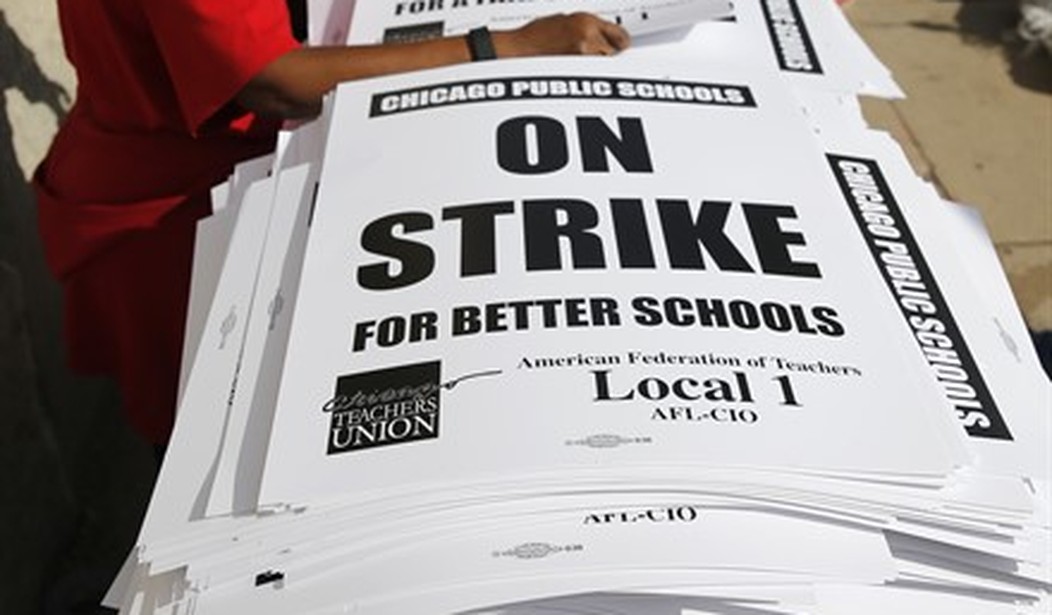Since last month, several teachers unions across the country have gone on strike ahead of the 2022-2023 school year. This is the same time most school districts plan to return to full-time, in-person and “normal” schooling since the onset of the COVID-19 pandemic.
However, teachers unions around the country are voting to authorize strikes over wages, class sizes, and building conditions, among other things. In Columbus, Ohio, teachers went on strike over class sizes and building conditions, such as ventilation, delaying the school year for about 50,000 students. Teachers in Seattle and nearby suburb Kent went on strike over wages and class sizes as a result of staffing issues. About 2,000 service employees within the Philadelphia School District voted to authorize a strike over wages and training conditions.
However, during the pandemic, the government allocated funds for schools to be used to rectify these issues. As mentioned in the teacher strike in Columbus, the U.S. Department of Education outlined last year that education funds in the COVID-19 American Rescue Plan (ARP) could be used to improve air quality for school buildings, including projects to repair or replace heating, ventilation and air conditioning systems.
The APR provided $122 billion for the Elementary and Secondary Schools Emergency Relief (ESSER) Fund to help schools combat the spread of COVID-19, including through improving air quality and ventilation in schools. In addition, the Governors Emergency Education Relief (GEER) funds and Higher Education Emergency Relief (HEER) funds supported this type of work as well.
In June, PBS noted that the average U.S. school building is around 50 years old, and many are more than 100 years old. But, a report from the U.S. Centers for Disease Control and Prevention found that most public schools made “no major investments” in improving indoor ventilation with the funds they received in COVID-19 relief. Instead, many schools relocated classroom activities outdoors and opened windows and doors. The report found that less than 40 percent of public schools replaced or upgraded their HVAC systems, many of which were outdated or nonexistent.
Recommended
NBC noted that several schools in Columbus were on track to have their HVAC projects completed in August and September. Three schools did not have this renovation scheduled this school year, but two were scheduled for it next summer. However, the teachers union said these conditions were “unacceptable” and that the school board’s “history of vague promises” were “reasons not to take it at its word” and go on strike. After having their learning disrupted for more than two years, children were unable to go to school due to a strike.
On Wednesday a spokesperson from the Department of Education told Fox News that the department is confident that school districts are spending ARP funds appropriately, though several cities, such as Baltimore, sent children home from school due to inefficient HVAC systems during a heat wave.
"We continue to urge schools to use all available resources, including funds we’ve provided through the American Rescue Plan, to support a safe and healthy in-person learning environment as far too communities face record heat,” the spokesperson said before blaming climate change.
"No one is immune from the impacts of climate change, which is why the Biden administration has made it a top priority to invest in improving community resilience, making heating and cooling more efficient and affordable and reducing pollution," the spokesperson added.
The ARP funds, including ESSER funds and Coronavirus State and Local Fiscal Recovery Funds (SLFRF), were encouraged to also be used to address teacher shortages – an issue that has plagued school districts all over the nation, and contributed to the strike in Kent, Washington. A recent report from The Salt Lake Tribune explained that the shortage of teachers in Utah is making it “incredibly challenging to operate” and staff are asked to take on extra duties, which leads to higher resignation rates, heightening the problem.
This was outlined in guidance released by the U.S. Department of Education. In the guidance, it recommended that SLFRF funds be used to rehire public sector workers up to pre-pandemic levels and provide assistance to “disproportionately impacted schools,” such as school districts with high rates of poverty, or used to expand early learning services and practices that address different social, emotional and academic needs for students.
The guidance also spotlighted how specific school districts across the nation used the funds to navigate a teacher shortage, such as rehiring retired teachers, having “resident visiting teachers” on standby, rolling out pay raises to retain teachers, offering bonuses for qualified individuals who obtain a substitute teaching license and creating sign-on bonuses for new teachers.
In December, Education Secretary Miguel Cardone urged school districts to act with “urgency” to use the COVID-19 relief funds to retain teachers and hire more staff.
“The U.S. Department of Education (ED) is committed to supporting districts and schools across this country in addressing teacher and staff shortages, minimizing disruption to in-person learning, and meeting student needs. That is why we are urging you to use resources from the $122 billion made available through the American Rescue Plan Act of 2021 (ARP) Elementary and Secondary School Emergency Relief (ARP ESSER) Fund and a portion of the $350 billion made available through the ARP’s Coronavirus State and Local Fiscal Recovery Funds (SLFRF) to ensure that students have access to the teachers and other critical staff they need to support their success during this critical period,” Cardone said in a letter. “This includes moving quickly to implement short-term strategies while also considering longer-term investments.”
“ARP provides vital resources to hire additional educators and school staff and to improve compensation to recruit and retain educators and school staff. School districts should act with urgency to keep schools open for in-person learning and ensure they do not waste this opportunity to make critical investments,” the letter added.
This week, The Wall Street Journal ran a piece explaining how teachers unions exhorted Congress (and taxpayers) for money during the COVID-19 pandemic and “pushed shutdowns” until parents “revolted.”
America’s teachers unions demanded that schools be kept shut even as they remained open in Europe. At the same time unions used the pandemic to extort money from Congress. Schools received some $190 billion in federal Covid relief to safely reopen and address learning losses, but schools stayed closed and much of the money still hasn’t been spent.
Not to mention, reports showed how teachers unions demanded to get the COVID-19 vaccine before going back to the classroom. The Chicago Teachers Union, specifically, pushed for the delay of the school district’s reopening until teachers had received the first dose. When schools eventually reopened, Chicago teachers walked out of their jobs over COVID-19 safety concerns. In March, a separate teachers' strike in Minneapolis over wages lasted three weeks. Teachers in Sacramento walked out on the job for similar reasons.
The WSJ also pointed out that a new federal report showed that students suffered irreparable learning loss in the past two years due to the pandemic and blamed teachers unions for “[setting] back America’s children for years.”
According to the National Assessment of Educational Progress, math and reading scores among 9-year-olds fell across all race and income levels in the past two years, though they were significantly worse among low-ranking students. Those in the 90th percentile showed a 3 percent drop in math scores, while students in the 10th percentile fell 12 points, which Leah covered. Average 9-year-old scores declined the most on record for math (seven points) and in reading since 1990 (five points).
National Center for Education Statistics Commissioner Peggy Carr said that “school shootings, violence, and classroom disruptions are up, as are teacher and staff vacancies, absenteeism, cyberbullying, and students’ use of mental health services,” in response to the numbers. She did not acknowledge how students not attending school at all contributed to the learning loss.
Townhall has also covered lower academic performance, chronic absenteeism and mental health challenges that have become prevalent among students since the pandemic. This year, a U.S. Centers for Disease Control and Prevention study found that more than 40 percent of teenagers felt "sad" or "hopeless" during the pandemic. Last month, 50,000 students in Los Angeles were absent on the first day of school.
WSJ’s report follows up to a 2020 piece about how teachers unions extorted taxpayers with an “ideological wish-list” to return to school.
“Americans are getting a closer look at the true, self-interested character of today’s teachers unions. They are allies of the political left,” the WSJ Editorial Board wrote in August 2020. “And they wield monopoly power that they are now using to coerce parents and taxpayers to dance to their agenda if they want their children to learn.”

























Join the conversation as a VIP Member